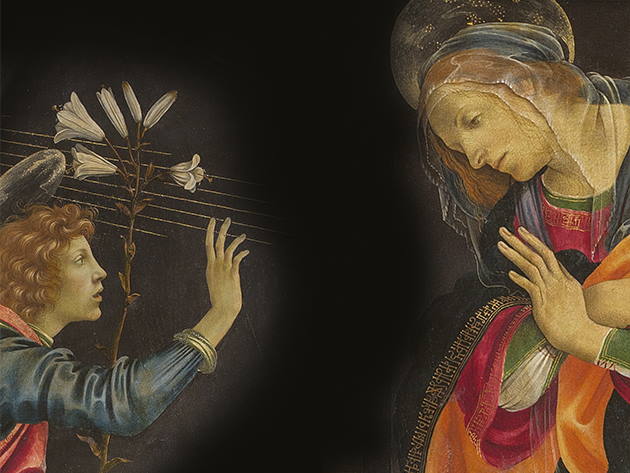
The exhibition Filippo and Filippino Lippi. Ingenuity and oddities in the art of the Renaissance at the Capitoline Museums, curated by Claudia La Malfa, places the golden age of the Italian Renaissance between Florence and Rome at the centre, focusing on some of the masterpieces of Fra' Filippo Lippi (1406-1469) , one of the major artists of Cosimo de' Medici's Florence, and of his son Filippino (1457-1504), heir to his father's genius, who was able to interpret the artistic taste of Rome at the end of the fifteenth century. The careers of both artists, in fact, are closely intertwined with the cultural climate of the Renaissance period.
The exhibition presents some wonderful paintings and drawings that illustrate in an explanatory manner the artistic contribution of both masters, including the famous Madonna Trivulzio of the Castello Sforzesco in Milan by Filippo Lippi and the Annunciation of the Civic Museums of San Gimignano by Filippino Lippi. Furthermore, visitors can learn about the singular biographical story of the two painters and all the important artistic production which, in the case of Filippino Lippi, also included a stay in Rome for the fresco decoration of the Carafa chapel in the basilica of Santa Maria sopra Minerva.
Fra' Filippo di Tommaso Lippi (1406-1469) was with Beato Angelico and Domenico Veneziano, a very refined and eclectic artist, capable of assimilating the lessons of the great masters of the time, especially Masaccio and Donatello, who gradually oriented himself towards a wider range of influences, also including Flemish painting. His style gradually became predominant in the Florentine area, forming the basis on which painters such as Botticelli created their own manner.
Filippo Lippi (1457-1504), called Filippino Lippi to distinguish him from his father, took up the linear style of his master Sandro Botticelli, but used it to paint works in which the unreal character and the fantastic element of the scene stood out with elongated figures and scenes full of imaginative details. His painting is among the most representative of the evolution that took place at the end of the 15th century in Florence: from the age of balance and linear purity, art oriented itself over time towards expressive exasperation and the mysterious, fantastic element and disturbing, which then led to mannerism and then reached Impressionism.
The exhibition project is the result of a collaboration with important Italian cultural institutions, including the Uffizi Gallery, the Venice Academy, the Cini Collection in Venice, the Pinacoteca dell'Accademia Albertina in Turin and the Central Institute for Graphics From Rome.
Photo credits: the Capitoline Museums official site
Informaciones
From 15 May to 25 August 2024 - extended to 22 September
Every day 9.30 - 19.30
Last admission one hour before closing time
Before planning the visit, CONSULT THE NOTICES
 Condividi
Condividi











































